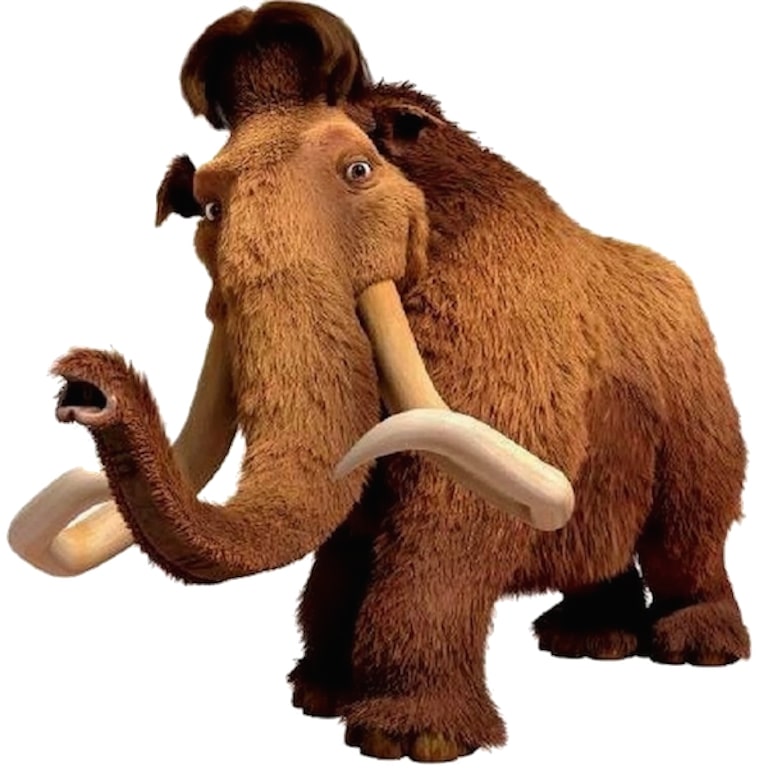Affiliate links on Android Authority may earn us a commission. Learn more.
⚡ Welcome again to The Weekly Authority, the Android Authority newsletter that breaks down the top Android and tech news from the week. The 160th edition hitting your inbox — no repeats of last week, we promise.
🎮 I've spent most of the week playing BioShock Remastered on my new Acer Predator, picked up after another tried-and-failed attempt to bag a PS5 so I could play Deathloop!
☕ Grab your beverage of choice and get comfortable — this week's hottest news is being served...

- Apple: Apple’s online event on Tuesday saw the launch of the iPhone 13 series including the iPhone 13 Mini, iPhone 13, and iPhone 13 Pro, for pre-order from September 17. The Apple Watch 7 was also revealed with no release date yet. Apple surprised us with a new iPad and iPad Mini, but no Airpods 3. Meanwhile, 14- and 16-inch MacBooks are expected at a virtual Apple event “in the next several weeks,” likely at an online event in October. Also this week, Apple warned users not to attach their iPhones to high-powered motorcycles, mopeds, or scooters, and patched an NSO zero-day flaw affecting all devices.
- Samsung: The One UI 4.0 beta is now available for the Samsung Galaxy S21, S21 Plus, and S21 Ultra. The rumored S21 FE may not launch until October, and Korean-based The Elec claimed the S22 Ultra will offer S Pen support, though there are rumors the S22 will also sport a smaller battery than expected. Samsung could also be bringing its 108MP camera to the Galaxy A series, while a leak supposedly showed renders of the Galaxy Tab A8.
- Google: Android 12 stable release date looks set for October 4. More Pixel 6 Pro leaks suggested a 5,000mAh battery, 12GB RAM, and other high-end features, as well as a Tensor specs leak, which is a bit confusing. You can now see the real-life Google Pixel 6 and Pixel 6 Pro in the window of Google’s NYC store. Also this week, Google started rolling out a dark mode to everyone and could soon introduce free TV channels to its streaming platform.
- Xiaomi: Xiaomi’s Wednesday event saw the launch of the 11T series including the 11T, 11T Pro, and the 11T Lite 5G NE. It also announced the Mi Smart Band 6 NFC and the Pad 5’s global launch — but not for the US. Earlier in the week Xiaomi also introduced smart glasses, but they’re just a concept for now.
- Elsewhere: Sir Clive Sinclair, the father of the ZX Spectrum, died this week aged 81. The Realme Pad launched in India, while the Realme 9 series has been delayed to 2022 due to the chip shortage. A new leak showed off the OnePlus Buds Z2, and a new mid-range Qualcomm chip’s reportedly in the works for cheaper gaming phones. Meanwhile, Microsoft rolled out passwordless logins, and SpaceX’s Crew Dragon made history as it became the first all-civilian flight to orbit after it launched from Florida on Wednesday at 8:02 PM ET.
- Movies/TV: Comedian, actor, and SNL regular Norm Macdonald sadly died of cancer this week, aged 61. Marvel Studios dropped the first official trailer for Hawkeye, their latest Disney+ streaming series, while new Disney and Marvel movies won’t go straight to streaming and HBO is leaving Amazon Prime Video. This week also saw the first trailer drop for Guillermo del Toro’s Nightmare Alley.
- Gaming: Over at Sony, Deathloop launched for the PS5 and PC and already has rave reviews. The GTA 5 Enhanced Edition trailer drew criticism from fans for looking “exactly the same” as PS4 and Xbox One versions. Nintendo dropped the price of the main Switch by £20 ($28) and €30 ($35) in the UK and the rest of Europe. Speaking of the Switch, it finally has Bluetooth audio enabled. Meanwhile, Razer has been busy making gamer thimbles.

- Xiaomi 11T Pro review: “Lightning-quick charging meets middling cameras.” No OIS, big problem.
- Samsung Galaxy XCover Pro review: This middle-of-the-road rugged phone looks great but there are better options out there if speed is a priority.
- Lenovo Yoga Tab 13 review: It’s an easy recommendation thanks to the large, high-resolution display, zippy performance, and excellent battery life.
- Samsung Galaxy Z Flip 3 second opinion: “The practical option for anyone on the fence about foldables.”
Features
- 7 more smartphone marketing tricks phone brands should stop using right now: Trade-in pricing and sketchy update policies, we’ve had enough of you (Android Authority).
- Personal tracking tech is headed towards a precise — and dangerous — new era: Stalking, surveillance, and how you can protect yourself (Android Authority).
- This is how you build a telescope to hunt for dark energy: A technological marvel will soon be at work studying two billion galaxies (Wired).
- Inside Virgin Hyperloop, I glimpse our high-speed transport future: A visit to Virgin’s prototype “Devloop” in the Nevada desert (CNET).
- When you’re living in an immaterial world, what’s for sale? Influencers, symbolic analysts, and buying and selling in the age of turbo-capitalism (Wired).

It might be time for the return of the woolly mammoth. It’s going to be tackled by Colossal, the company co-founded by Harvard genetics professor George Church and entrepreneur John Lamm, which raised $15m.
- Except, Colossal’s not actually bringing it back, it’s creating a whole new species that’s close to, but not an exact replica of the woolly mammoth: de-extinction.
If it sounds a bit like the beginning of Jurassic Park, well, it is and it’s not. It’s true that the $15m seed round was led by Thomas Tull, former CEO of Legendary Entertainment (responsible for Jurassic World). But this isn’t cloning in the traditional sense. And woolly mammoths aren’t likely to go on a rampage and eat us all… So how do scientists plan to resurrect the mammoth, and why would anyone want to do such a thing? We dig a bit deeper.
How is this possible?
- Colossal scientists will use CRISPR-Cas 9 gene-editing technology to create a totally new species.
- They’ll add 60 or more genes from the woolly mammoth to the cells of an embryo from its closest living relative, the Asian elephant. If that sounds familiar, you might be thinking of the Chinese scientist who controversially used the same technology on human embryos in 2018, which later landed him in prison.
Colossal has been experimenting with the technology for some time, according to Popular Science: “In 2015, Church’s lab successfully integrated mammoth genes for small ears, fatty tissue, and shaggy brown hair into the DNA of elephant skin cells.”
The science part can get pretty complicated, but basically, CRISPR is “an enzyme that can bind and cut specific sites on a strand of DNA.” Popular Science explains, “…It’s paired with other DNA-editing enzymes to splice genes from the woolly mammoth into the Asian elephant.” This helps it adapt better to the freezing Arctic weather.
- First, the team needs to take a sample of and sequence the woolly mammoth genome from a frozen carcass.
- Next, they’ll check to ensure the genes correspond to the traits they want: big, check; woolly, check; mammoth-y, check.
- Then, they synthesize the genes and place them into the embryo of another animal — they’ll do this using mouse and pig models first, later using Asian elephants.
- The elephant then gives birth to a woolly mammoth, or that’s the idea, anyway.
Church and his team are also working on creating a synthetic womb.
Why bring back the mammoth?
Back when mammoths roamed the earth, they played a huge role in stabilizing the arctic ecosystem, the permafrost in particular. Large herbivores encourage the growth of light-colored steppe grass which reflects sunlight back into the environment, thus reducing the heat absorbed by the earth, lowering the temperature, and reducing permafrost melting.
As The Guardian explains, “Arctic permafrost is estimated to contain four times as much carbon as we humans have emitted since the Industrial Revolution.” With the emissions we’re now creating, scientists expect 40% of that permafrost to melt by the end of the century — it’s a ticking time bomb. It’s hoped reintroducing the woolly mammoth — or a creature close to it — could change things, as well as increasing biodiversity.
The same permafrost means many well-preserved mammoth specimens are available to study, allowing scientists access to full genome sequences, as well as information on how the creatures evolved over time.
Colossal’s goal for bringing back the mammoth is to “combat the effects of climate change through ecosystem restoration.” In the long-term that could prevent extinction or even bring back species that are critically endangered.
Read more: Woolly — The True Story of the Quest to Revive One of History’s Most Iconic Extinct Species by Ben Mezrich.
Not a new idea
This isn’t a new project for George Church — he’s been working on it at Harvard for almost a decade, while Penn State University scientists have been in discussion about cloning a mammoth since 2010.
Others have too:
- Back in 2019 in Japan, scientists made a breakthrough in cloning a mammoth after recovering cells from a 28,000-year-old specimen that showed signs of life. These cells were implanted in mouse cells, with five specimens demonstrating “the biological reactions required for cell division to begin,” according to a study published in Scientific Reports — though none produced the cell division needed to actually bring a mammoth back to life.
- In Russia, father and son team Sergei and Nikita Zimour have been working on their Pleistocene Park experiment since the 80s, reintroducing Pleistocene-era creatures like bison and Yakut horses to a roped-off area of the Siberian Tundra.
- Simply reintroducing these creatures can lower the permafrost temperature by up to 15 degrees Fahrenheit.
Are there risks?
While a full-blown Jurassic-Park-style scenario seems unlikely, de-extinction isn’t without its risks. Jesse Reynolds, researcher at the Emmett Institute on Climate Change and the Environment at the University of California wrote a paper Current Opinion in Environmental Sustainability, where he noted “some conservationist synthetic biology” could pose risks to the environment.
- The problem is, we don’t know exactly what those risks are, as CRISPR has, up until now, mostly been used in controlled settings like labs — for example in mosquitoes.
Re-wilding a species that’s been dead for thousands of years could have serious ramifications, such as displacing other species, or even spreading a new disease — and there are ethical and moral considerations too. But this is less about playing God and more about correcting our mistakes.
- The woolly mammoth’s huge size makes it ideal for radio and other tracking mechanisms, so if anything goes wrong, there’s an, ahem, “undo” button.
When could we see mammoth calves?
So when could we first bump into a woolly mammoth-type creature roaming the Siberian tundra? Sooner than you might think. The capital Colossal has received should fund the team as they develop a viable mammoth embryo. If their plans stay on track, we could see the first calves from the project in four to six years, and that’s if other scientists don’t get there first.
- September 22: Microsoft Surface Event (possibly Surface Duo 2, new Surface laptop, new Surface Pro)
- October 4: Android 12 stable release date
- October 7: Far Cry 6 release date (PC, PS4, PS5, Xbox One, XSX, Stadia)
- October 12: Back 4 Blood release date (PS4, PS5, Xbox One, XSX, PC)
- October 19: Possible Pixel 6 release date?
Tech Tweet of the Week
First: Well, that escalated quickly.
who needs the standard ‘out of order’ sign when you can do this pic.twitter.com/J2yQztSwPk— Rob N Roll (@thegallowboob) September 14, 2021
Second:
Falcon 9 lifts off with Dragon and our four #Inspiration4 astronauts, captured with closeup pad cameras by @johnkrausphotos 📷🚀 pic.twitter.com/8wrXIurb7k— Inspiration4 (@inspiration4x) September 16, 2021
Have an out-of-this-world week!
Paula Beaton, Copy Editor

